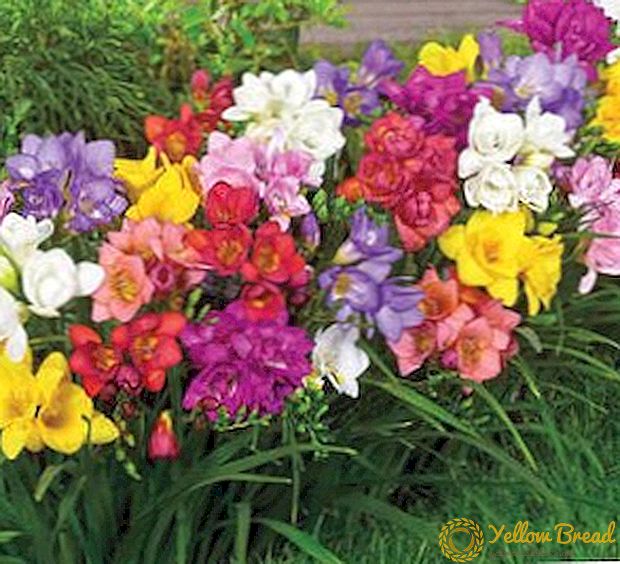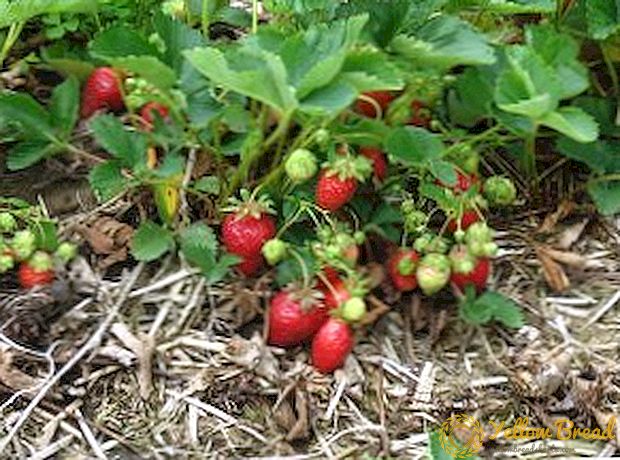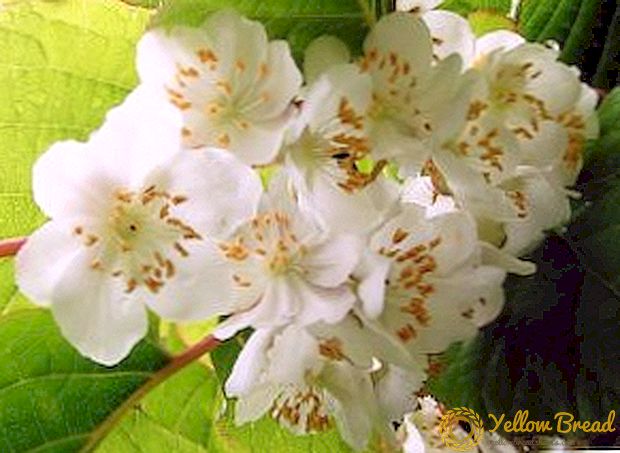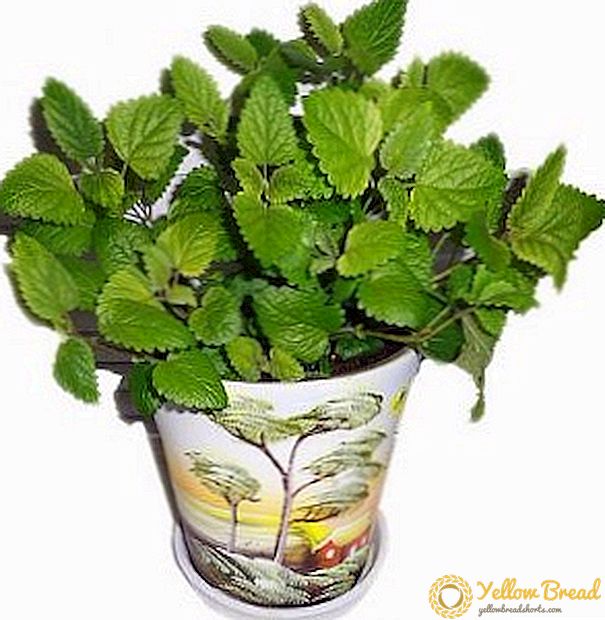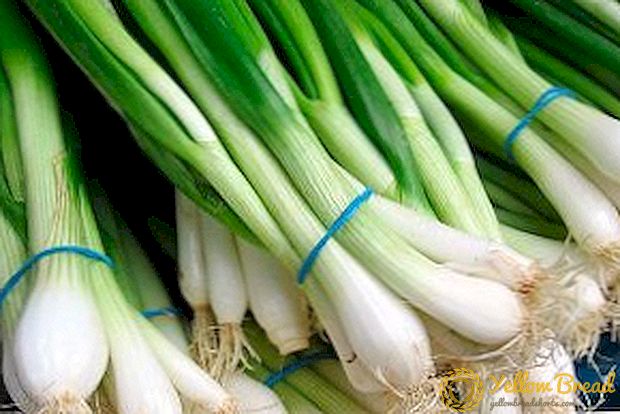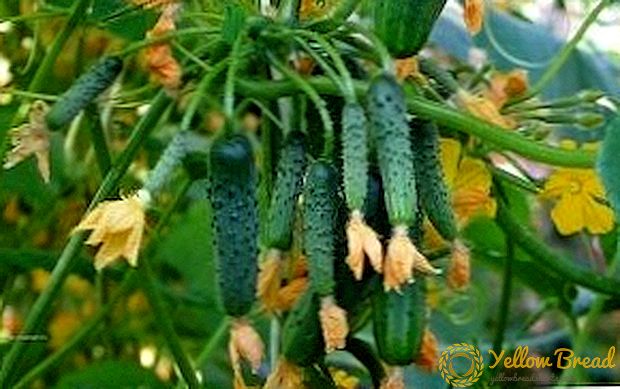 If you want to make your garden well-groomed and attractive, but do not have plenty of time, decorative herbs and cereals will come to your aid. Choosing what to plant in the yard, pay attention to the maximum height that the plant can reach, because this is a fundamental factor in determining areas for planting. Consider the 9 most popular varieties of ornamental grasses for flower beds, their names and photos.
If you want to make your garden well-groomed and attractive, but do not have plenty of time, decorative herbs and cereals will come to your aid. Choosing what to plant in the yard, pay attention to the maximum height that the plant can reach, because this is a fundamental factor in determining areas for planting. Consider the 9 most popular varieties of ornamental grasses for flower beds, their names and photos.
- Fescue
- Kaleria
- Lugovik
- Moliniya
- Cortaderia
- Miscanthus
- Canary
- Tonkonog
- Pennisetum
Fescue
One of the most popular cereals is fescue. It is a herbaceous perennial with a small thick rhizome. Fescue grows mainly in a temperate, cold and subtropical climate. Reach heights from 10 to 150 cm.
The grass is hardy, needs bright light. The best development of her occurs in sunny areas, where the leaves of fescue acquire a characteristic metallic shade of green. Soil is best to choose dry and loose.
The plant does not tolerate moisture, it suits poor soil with a low content of nutrients and minerals.It is one of the most unpretentious representatives of cereals, it does not need watering even in the hottest months, it does not require fertilizers and top dressing. Fescue blooms in June, the inflorescences have the appearance of small spikelets. [
Kaleria
Another prominent representative of ornamental grasses is a cereal plant called kaleria. This is a semi-evergreen form of cereal about 40 cm in height and 30 cm in diameter. The leaves are gray and hard, slightly curtailed, 5-12 cm long.
Sandy soil and a dry, sunny place are ideal conditions for plant development. Kaleriya requires good drainage, otherwise it is soaked. It decorates the garden all year round, as it is winter-resistant, and young sprouts of emerald color appear already in early spring.
The grass blooms from June to July, blooming in the form of a cylindrical panicle and bladed spikelets. Propagated by seed and division of the bushes.
Lugovik
Decorative grass for the garden lugovik, with its better known name - pike, covers over 40 types of cereals. Best of all, grass grows in swampy meadows, in damp forests, off the coast of ponds and marshes. Reaches 1 m in height.
The plant can develop in acidic and dense soil, but grows faster on fertile. Lugoviku more suitable sunny areas, under such conditions, it blooms more abundant and brighter. A long summer drought can cause grass to fall out. Lugovik constantly needs sufficient moisture.
Diseases and pests are not exposed, does not require fertilizers. The only threat is the damage to the leaves by rust, which occurs due to hot weather. The grass propagates by self-sowing, therefore, a certain observation is necessary to prevent the uncontrolled spread of seeds.
Moliniya
A spectacular decoration of your lawn will be prayer line - a large perennial ornamental grass, which grows from a single root abundant shrub. Reaches heights from 40 to 200 cm.It has straight, bare stems, leaves are located at the base of the bush. The color is bright green, in some varieties there is a motley border of the leaves.
Molineia blooms for two months, starting in mid-summer. The inflorescence is located on the top of the stem and has the appearance of a panicle. The plant is propagated by dividing the bush, but it is also possible to plant in light, slightly acidic soil. To do this, use small pots, so as not to damage the fragile rootstock germs. The optimal time for sowing is April.
Moliniya perfectly tolerates dampness and shade, does not like too sunny and dry areas. The ideal soil for development is wet and fertile. The plant does not need to fertilize and feed. 
Cortaderia
Cortaderia - perennial ornamental grass, which attracts the attention of people with its lush multicolored ears and impressive size, reaching a height of 2 to 3 m.Due to the rapid growth of the plant from its powerful rhizomes, it is hard to get rid of. The bloom at the cortaderia is observed in August - October, when at the end of the stems a panicle with a length of 30-50 cm white, cream or pink appears.
Propagated by seed or vegetatively. It is not difficult to care for the grass, as it is unpretentious to the composition and fertility of the soil, it is well going through drought and bright sunshine.
It is advisable to plant the cortadera on a spacious open plot of land, it is not afraid of drafts and gusts of wind. Watering is carried out every 2 weeks, if there is no natural rainfall. Feed the plant should be in the spring, it does not need fertilizers.
Miscanthus
The perennial ornamental grass called miscanthus, shown in the photo below, is used for landscaping gardens and successfully adapts to our climate. They are better to decorate the lawn for group plantings, as well as in the decoration of the banks of the reservoir and creating flower arrangements.
The height of an adult plant is 80-200 cm, and its roots can go deep into the ground up to 6 m.In spring, the leaves of the miscanthus acquire a bright green color, which, by the beginning of autumn, becomes straw-yellow. The grass blooms from July to September in the form of fan-shaped panicles consisting of long spikelets of yellowish or pinkish color. Like most ornamental grasses, miscanthus is propagated by seed and vegetatively.
The plant is thermophilic, it should be planted in the soil in the second half of spring, when the snow has melted and the soil has completely warmed up. The soil must be fertile and moist. Miscanthus needs regular watering and mineral fertilizers. 
Canary
A great addition to the design of your garden will be canary - perennial cereal plant about 1 m in height. It has linear leaves, up to 2 cm wide, decorated with white or cream stripes. The grass is resistant to frost and prolonged drought. Canary grass is best suited wet or wet soil. On fertile soil, its color becomes more spectacular and bright.
The plant needs a lot of sunlight and regular watering, in such conditions it grows well and develops quickly. Reproduction occurs by dividing the bush. It is recommended to plant a canary around ponds. The most widespread grass received in landscape parks as a ground cover plant. 
Tonkonog
The ideal plant for slides, stony gardens and natural gardens with drainage is tonkonog. This is a decorative perennial about 60 cm tall and bright green leaves. Stems greenish-yellow color, strong. The foliage is flat, straight or slightly curved, covered with short hairs on both sides, due to which a velvety effect is created.
In the wild, grass is found in pine forests and river terraces. The plant tolerates winter easily and is considered to be cold-growing. In the autumn, the soil around the grass must be mulched.Dried soil is suitable for cultivation; in case of heavy clay and waterlogged soil, the tonkog can die.
This species begins to bloom in June-July, the inflorescences are in the form of thick greenish broom panicles, later of golden color. Tonkonog easily propagates with the help of seeds, but for some varieties only vegetative propagation is used. 
Pennisetum
Lush perennial family of evil will be a great addition to your garden, giving it lightness and airiness. It is quite a thermophilic plant, it requires good lighting and reliable protection from the cold. For planting it is best to use fertile subacidic soil with drainage. Watering should be carried out only during the drought period, as the pennisetum reacts poorly to excess moisture in the soil.
Unlike other representatives of decorative cereals, the plant must be periodically fed with organic matter and mineral fertilizers.Thermophilic varieties of this species do not tolerate frosts, so they are grown mainly as annual crops.
Pennisetum is propagated by seeds and division of bushes. Blossoming is observed in the form of a panicle in length from 3 to 35 cm. The color of the inflorescences can be white, pink, burgundy or greenish.  The use of ornamental herbs in the design of your garden plot will make it attractive and will give a special style. Almost all varieties of these herbs are unpretentious to weather conditions, soil composition and irrigation regime. When choosing which of the grass plants to plant in the garden so that it is stylish and beautiful, it is very important to take into account the peculiarities of care for each of the species, their possible height and tolerance of frosts and droughts.
The use of ornamental herbs in the design of your garden plot will make it attractive and will give a special style. Almost all varieties of these herbs are unpretentious to weather conditions, soil composition and irrigation regime. When choosing which of the grass plants to plant in the garden so that it is stylish and beautiful, it is very important to take into account the peculiarities of care for each of the species, their possible height and tolerance of frosts and droughts.

